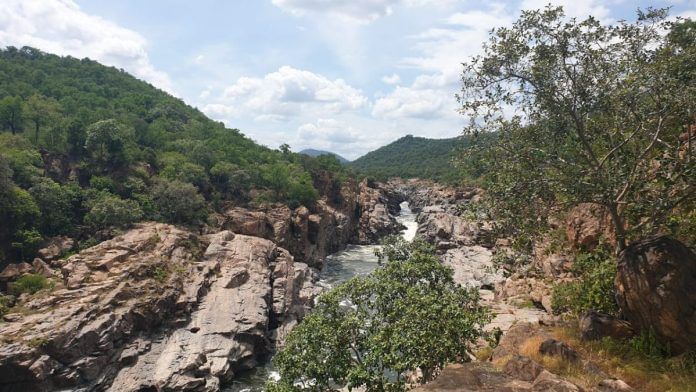Bengaluru: The Mekedatu Balancing Reservoir and Drinking Water Project happens to be Karnataka’s most ambitious dream project. And now it is back in the news after the Supreme Court’s order on 13 November 2025 rejected an important roadblock—Tamil Nadu’s opposition to the dam construction. It offers a brief relief for Karnataka.
The Court, in its order, has stated that the project is still in the Detailed Project Report stage and that the water authorities, including the Cauvery Water Management Authority (CWMA), Cauvery Water Regulation Committee (CWRA), and Central Water Commission (CWC), must examine it in detail before any proceedings. It called Tamil Nadu’s opposition plea ‘premature’.
Karnataka Deputy Chief Minister DK Shivakumar called the order ‘justice to the state’.
However, the court has not given the blanket go-ahead to construct the dam yet. The project must still undergo a lengthy process of various clearances for wildlife, forests, and the environment, say experts. This mega project of the construction of a dam falls right in the heart of the pristine Eastern Ghats forested landscape of Cauvery Sanctuary. That has alarmed several environmental activists in the state.
Also read: India faces a severe water crisis & Modi govt can’t tackle it alone. Here’s what we can do
What is the Mekedatu project?
The main objective of the project is to utilise the additional 4.75 thousand million cubic feet of water to provide drinking water to the Bengaluru Metropolitan Region and its adjoining areas through a tap water scheme. And also to harness 400 MW of renewable energy annually.
Even before the State reorganisation, i.e. 1948, the possibility to construct a dam was explored when Kollegal territory was under the Madras Presidency. After the reorganisation of states in 1956, the project was once again investigated by the Hydro-Electric Project Investigation Department of the Government of Mysore then by the Karnataka Power Corporation Limited (KPCL) from 1986 onward. KPCL prepared a report titled Mekedatu Hydroelectric Project in July 1996. However, further consideration of the matter was halted at that time by the centre, it directed the Government of Karnataka to wait for the Award of the Hon’ble Cauvery Water Disputes Tribunal (CWDT).
But ecological experts worry about the bigger picture of massive ecological destruction that the state is overlooking.
It can potentially impact more than 5000 ha or 53 sq km of wild riparian habitat.
The forests of Cauvery Sanctuary is primarily a dry deciduous rich patch. To the north it borders Bannerghatta National Park, to the south it borders Male Mahadeshwara Hills Sanctuary (MM Hills) and Biligiri Ranganatha Hills Tiger Reserve (BRT TR). The Sanctuary is home to a variety of wildlife, such as the Mahseer fish, Mugger Crocodile, as well as Otters, Elephants, Tigers, Leopards, and other animals.
The proposed dam will run through three Ranges of the Cauvery Sanctuary—Mugguru, Sangama, and Halaguru. These Ranges are already reeling under severe human-wildlife conflicts. The Sanctuary has seen a total of 757 cases of human-wildlife conflict in 2022 alone, out of which 665 incidents involved crop loss. There has been a steady increase in conflicts since 2014-15, peaking in 2017-18 at 1304 cases. Protests are common and many farmers have given up on farming in these regions fearing attacks from wild animals.
Once the dam gets commissioned, the habitat for large animals is likely to shrink. And that just makes the spectre of conflicts more intense.
Impact analysis
This project is located within the Cauvery Sanctuary, a protected area that falls under the purview of the Wildlife (Protection) Act 1972. Clearance involves a stage-by-stage process of impact analysis. The pre-feasibility report, in its Chapter 4 site analysis, acknowledges the presence of many endangered species.
The underlying rationale behind this project is to arrest the excess water flow to the Bay of Bengal sea. Experts contest this. The Cauvery is an east-flowing river that joins the sea as a delta. It originates in the Bhagamandala region of Kodagu district in Karnataka, and then flows through Tamil Nadu, covering almost 70 km through forests.
The Supreme Court order, however, has made no mention of any of the environmental concerns. These did not feature in the arguments.
(Edited by Theres Sudeep)






